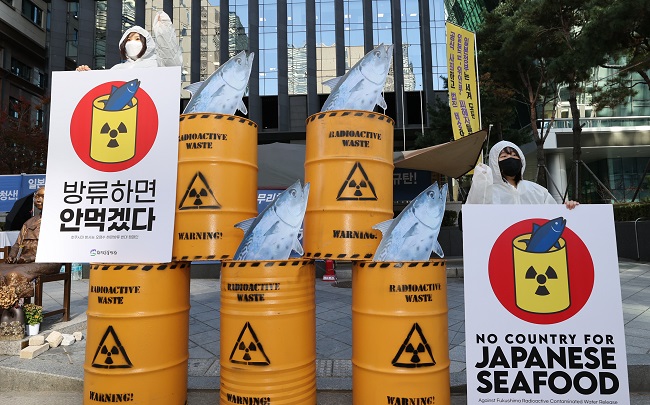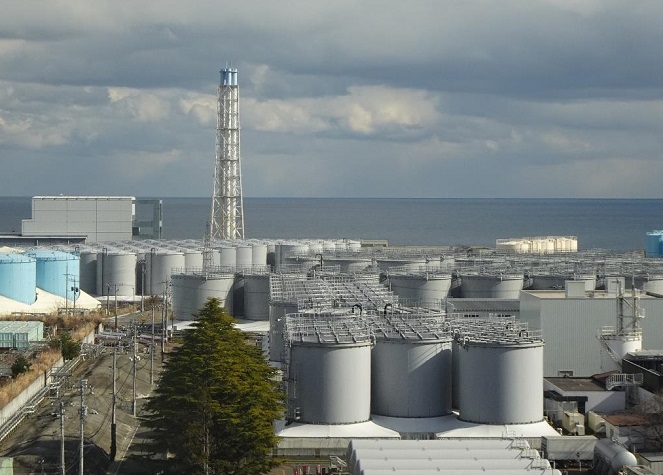SEOUL, Feb. 19 (Korea Bizwire) — Sashimi enthusiasts in South Korea are growing increasingly restless. Vague fears, after all, are far more unnerving than specific, concrete pains.
Despite international opposition, Japan is set to release radioactive water into the ocean from the crippled Fukushima nuclear power plant as early as April.
Alarming research suggests that the contaminated water could reach the seas around Korea within two years.
However, the manner in which the research was presented raises a pertinent question. It was not unveiled by the South Korean government but by a state-run research institute.
Critics suggest that Seoul is under pressure to formalize its position due to concerns over strained diplomatic relations with Tokyo.
Nonetheless, there is a growing chorus of complaints from the public. Many are beginning to feel that their government is prioritizing improving relations with Japan over the health of its citizens.

This photo shows pump facilities to transfer contaminated water after purification with the advanced liquid processing system (ALPS) at Fukushima Daiichi Nuclear Power Station of Tokyo Electric Power Co. (TEPCO), unveiled to foreign reporters on Feb. 2, 2023. TEPCO plans to discharge treated water from the damaged power station starting as early as this spring despite global concerns. However, the ALPS is not capable of removing tritium from the polluted water. (Yonhap)
The Korea Institute of Ocean Science and Technology and the Korea Atomic Energy Research Institute on Thursday conducted a simulation to determine how Fukushima’s contaminated water will spread.
The analysis examined how the water will disperse via ocean currents following its discharge.
The findings are concerning. It is anticipated that the contaminated water will reach the sea off Jeju Island within two years and spread to the East and West Seas within five years.
As the contaminated water that seeps into the West Pacific circles back to the sea surrounding the Korean Peninsula, the southeastern part of Jeju Island will come under its influence for the first time.
The results of this study are similar to those obtained by China’s First Institute of Oceanography under the State Oceanic Administration, which assumed that four times as much tritium would be released.
However, the research does have several limitations. As yet, no specific scientific investigation has been conducted into how the contaminated water will impact marine products.

Activists stage a campaign near the Japanese Embassy in Seoul calling for the boycott of Japanese seafood in protest against Tokyo’s plan to discharge into the sea radioactive water from its wrecked Fukushima nuclear power plant, in this photo taken Nov. 9, 2020. (Yonhap)
Seo Kyun-ryul, an honorary professor of nuclear engineering at Seoul National University, lamented the lack of analysis of how the contaminated water from the nuclear power plant will affect the overall marine ecosystem, including fish such as halibut, flounder, and tuna, at the top of the food chain.
Officials from the fisheries industry on Jeju Island, where losses are expected to total at least 400 billion won (US$307 million) annually, are also expressing their concerns.
In an interview with the local cable channel JTBC, Kim Young-ja, the president of the Jeju Haenyeo Association, noted that the situation in the ocean where the contaminated water will be discharged is dire.
“Our haenyeo, the women divers who harvest seafood, are being compelled to consume large quantities of the polluted water,” she said.
“As a result, there is little hope for the survival of all fishermen. Who would be willing to purchase seafood from this contaminated zone?”
H. M. Kang (hmkang@koreabizwire.com)







